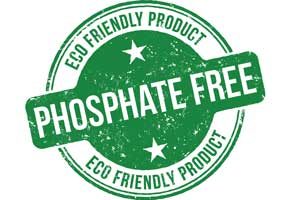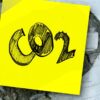 Have your ever thought of the toxicities of the various chemical ingredients in our laundry, floor cleaning, bathroom cleaners, etc. and the carbon cost of production, and impact on Climate Change?
Have your ever thought of the toxicities of the various chemical ingredients in our laundry, floor cleaning, bathroom cleaners, etc. and the carbon cost of production, and impact on Climate Change?
Well, carbon footprints are an indicator of the amount of carbon dioxide (CO2) produced in the process of manufacturing, shipping and using the product. Of course, the carbon footprints vary, depending on the chemicals used. While it would seem an easy exercise, the fact is manufacturers rarely reveal the composition of the products. It is estimated though that carbon footprint of home and personal cleaning products is in the range of 0.7 lbs of CO2 emissions per pound of product. In other words, labels have limited value in informing us about the product per se.
Ever since laundry detergent was introduced in the early 20th century, it has resulted in environmental pollution. For much of the early to late 20th century, the impact on environment was ignored despite the fact that the phosphates used in detergents to soften hard water and help suspend dirt in water led to unprecedented growth of algae in water bodies–the phosphates released in water acted as nutrients to marine plants, mainly algae. With no sunlight and oxygen, the water bodies filled with algae left the fishes, other marine creatures and plants dead, turning these into barren habitats, unsuitable for humans.
In the 1970s, water tests were carried out to check the level of phosphates in the water bodies. And much to the horror of all, it had increased by nearly 400% from the level of 1940s. Yet, it took another 2 decades before phosphates would be banned in detergents. Unfortunately, use of harmful chemicals that pollute the environment continued to be used in detergents and other washing products. Surfactants like nonylphenol ethoxylates and other enzymes and dyes used to enhance the wetting, foaming, dispersing and emulsifying properties of detergents are not just toxic to marine life but also affect human development and reproduction. Bleaching agents and dyes are equally harmful; some chemicals are known carcinogens.
Another important footnote in the phosphates story is that since the ban on phosphates in the early 90s, the phosphate levels in water has gone down but just by half of what it was in the 70s. We are yet to get to the 1940s levels.
It is time we all understood the impact of our inconsiderate and unmindful living, without considering the impact we have on our natural ecosystem, and our future survival. Water is fundamental to life.
Natural Alternatives
The irony is natural ingredients can be just as effective as chemical cleaners. Ingredients such as white vinegar, baking soda, borax, castile soap are all known to have fantastic cleaning properties. Besides, being safe and effective, they are also carbon-friendly alternatives. One can easily combine these ingredients to make laundry liquid, bathroom and floor cleaners, dish wash soap, hand wash liquid and such. There are many who are also doing it by themselves.
My personal search for natural alternatives led me to Wild Ideas, and over the last 2 years has been using only Wild Ideas products at home. Couldn’t be happier.
I still stock up on white vinegar, baking soda, borax at home. When I need to give the whites some brightness, I lean on either vinegar or baking soda. The same vinegar and baking soda combo is what helped me get rid of the stains left from use of chemical based toilet cleaners and in-cistern cleaners. Vinegar and baking soda come to my rescue when I have to remove the urine stains and odour on the garden tiles left by my dogs.
My garden and plants are happy. The soil around my house is happy. Gone are those white caked, hardened soil. Now, it is just moist.
Latha Chandradeep
Some interesting reading: https://exercisesforinjuries.com/what-you-need-to-know-about-laundry-detergents/




